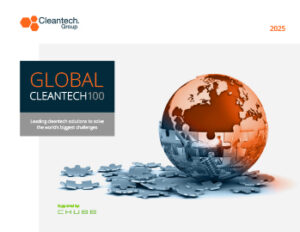Gas Purification Systems Will Need to Grow Alongside Hydrogen Production
Hydrogen is commonly used in industry as a fuel or as an input in chemicals production. Its demand is growing as its popularity for fuel and energy storage continues to increase, however, constraints on supply chains and markets are known. Corrosion, leakage, performance, and monitoring accuracy are a handful of the issues the existing value chain has today. Innovators are largely taking on each issue individually. As hydrogen technologies continue to see uptake, demand for gas purifiers will grow in tandem.
Divigas addresses hydrogen losses common in industrial separation with a polymeric membrane. The APAC Cleantech 25 company developed a hydrogen separation membrane which removes sulphites and contaminants, increases heat resistance and lifecycle. For distributed hydrogen users such as the trucking sector, refueling remains costly and economies of scale are also essential. Demand will only increase as new hydrogen production processes have massive purification needs. Purification of hydrogen and other gas streams has drawn the attention of major chemicals producers and even NASA.
Membrane gas separation is commonly used in industry to valorize waste gas streams. Two separation routes are common for hydrogen gas, chemical separation and membrane separation. The former is energy-intensive and requires a massive physical footprint to process. The latter has functional issues with high temperatures, acidic conditions, and heavy molecules like hydrocarbons. However, due to the tiny nature of hydrogen itself, separation overall results in operational difficulties that incur expenses as product is lost.
Purification Systems Ready to Address Industry Needs
To address H2 losses, Andre Lorenceau and Ali Naderi co-founded Divigas, a developer of a hollow fiber polymeric membrane with high selectivity for H2 that achieves a purity of up to 99.5% from any feedstock composition. With extensive background in membrane separation, Divigas’ founders developed membranes without the use of sorbents or critical metals like palladium or silver which significantly reduces costs and maintenance. And its modular systems use near-zero energy consumption because the processes are mechanically driven.
The approach relies on two mechanical processes for separating H2 from streams of 10-90% H2 composition. The first, ‘molecular sieving’ is where the membrane has ‘holes’ that are shaped to only let through H2. The second is ‘solution-diffusion’ where the relative permeation rate of the gases being separated guides the separation. As heat increases, the permeability of CO2 and other gases goes down whereas H2 permeability increases, resulting in a higher selectivity (efficiency).
Mixed gas feed containing hydrogen is pushed through proprietary polymeric hollow fibers. The pressure drives a molecular separation of the hydrogen. Pure hydrogen comes out at slightly lower pressure. Other gases (such as CO2) come out together at full pressure. Where Divigas’ membranes shine is in its performance and durability. Its membranes have a high thermal resistance that is operational at temperatures up to 150°C. Most membranes used in industry begin to underperform at 35°C — 50°C. Divigas’ membranes are also resistant to acidic gases commonly found in industrial waste gas streams, e.g., flue gas or hydrocarbons. These characteristics help to eradicate fouling, maintain efficiency, and reduce maintenance requirements.
Who Can Benefit from Divigas?
This purification technology has attracted attention from oil and gas producers for fuel gas recovery but can also be used in a wide range of applications including hydrogen producers (and start-ups, too!), syngas adjustment, carbon capture, and biomass gasification. The solution has applications in current hydrogen processing facilities, for example, in refining operations and ammonia production, where 10-20% of produced hydrogen is used for energy because it’s uneconomical to recover. With global production of hydrogen at 90M tons per year, the technology could help address emissions equivalent to around 9-18M tons per year of hydrogen production. The technology can also enable more efficient production of hydrogen from other sources such as methane pyrolysis or natural hydrogen extraction. Divigas’ customers report a 40-80% increase in profit margins.
What’s Next?
Recently, NGK and Mitsubishi Heavy Industries announced they will develop a hydrogen purification system for ammonia cracking gas that utilizes a ceramic membrane. There are a select few other innovators like HyET Hydrogen, HyGear, and H2SITE that have developed purification systems. These systems may be more suited for higher purity streams in specific applications such as for fuel cells. But none have reached the cost, durability, and range of applications that Divigas has.
Beyond hydrogen, Divigas plans to launch CO2 separation membranes for post-combustion carbon capture in industries like steel, cement and power plants in 2024. This technology could have a significant impact on industrial carbon emissions by capturing and storing carbon or by utilizing it as a chemical input.
Divigas has undertaken small-scale H2 pilots and plans to raise funds and scale manufacturing of membranes for large-scale pilot projects before broad commercial application in the late 2020’s. It’s backed by well-known cleantech investors including Volta Energy Technologies, Climate Capital, SOSV, Entrepreneur First, MANN+HUMMEL, and Energy Revolution Ventures.



